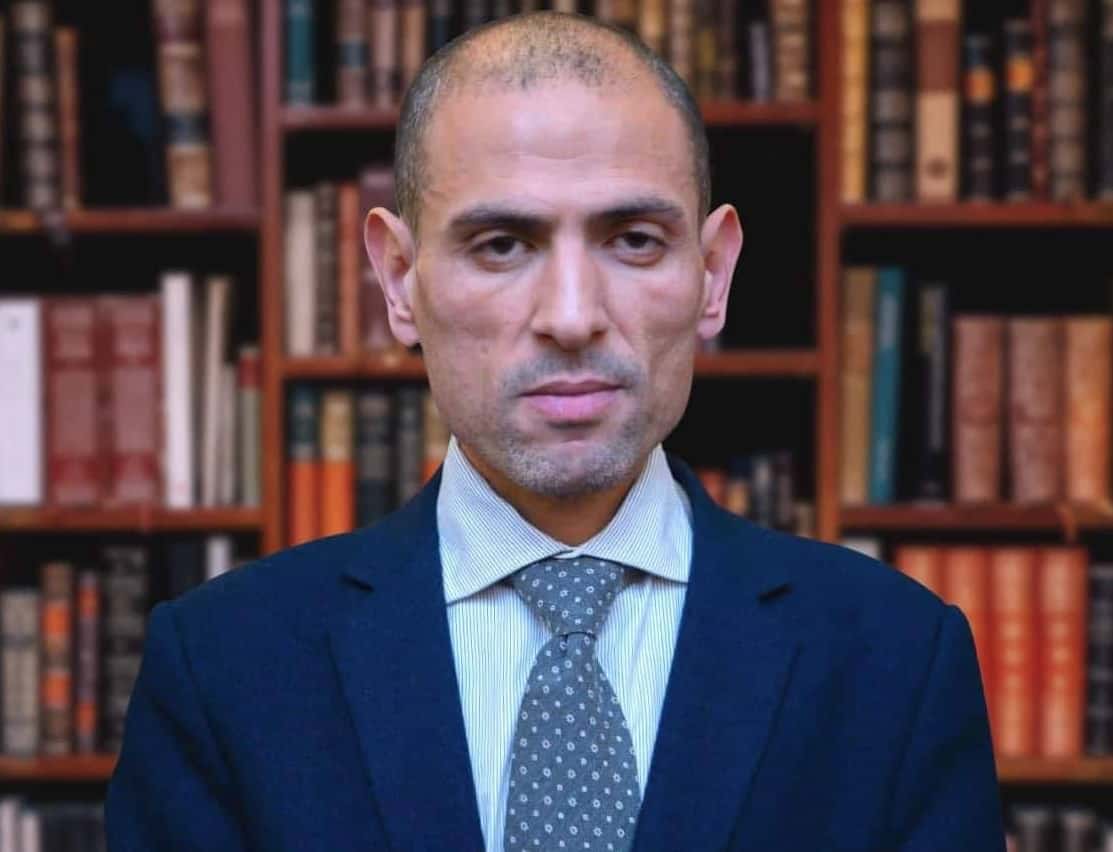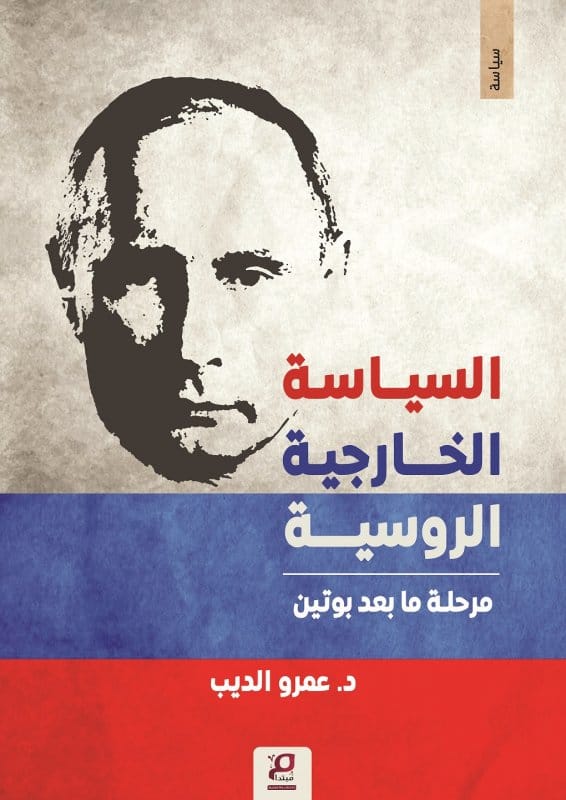The book “Foreign Policy of the Russian Federation .. after Putin”, written by Dr. Amr Mohammed Eldeeb reveals the major milestones of Russian foreign policy of the last twenty years and the factors that are playing a leading role in defining the main parameters of the country’s foreign policy for the future.

Dr. Amr Mohammed Eldeeb – Lecturer and senior researcher at the Russian State University of Nizhny Novgorod, and director of the Russian Realist Experts Center – in his book realizes, with neutral research eyes, a journey through the memory of the contemporary political history of Russia Federation, presenting and explaining the most important features of Russian history and providing distinctive analyzes of prominent Russian personalities, such as Yevgeny Primakov, who played an important role in determining the identity of Russian foreign policy.
In the introductory chapter, Eldeeb explains how Russian foreign policy has gone through three important phases, which have influenced not only Russia’s relations with the West, but also the shape of the current world order. Then he tells us what Russia experienced in the post-Soviet period, with the so-called post-change enthusiasm in the structure and ideology of the state.
With reference to the second phase of Russian foreign policy, Eldeeb believes that it began in practice in 2000, with the election of Russian President Vladimir Putin, which defined the concept of the national idea of Russia in order to fill the ideological void that arose in Russia after the collapse of the Soviet Union.
The third phase, which we are experiencing so far, Eldeeb says it began in practice since August 2008, coinciding with the Russian military campaign against Georgia, and the consequent real return of the Russian role on the world stage. Eldeeb believes that, due to human life, Putin will not continue to rule forever, but there will be a defining moment when the Russians will have to choose a new heir to take the reins of power in Russia, or even a new Russian elite to lead the country.
But to find an heir to Putin, who has been in power for nearly twenty years, won’t be easy. Also, Eldeeb says that this matter should be followed by other questions about how the Russian foreign policy will look like after the era of Vladimir Putin. And what files should his successor handle. These are the questions that the book deals with, and trying to find answers.
In the first chapter of the book, entitled “The Quiet Beginnings of Russian Foreign Policy”, the writer describes Russia as “the horse that cannot be tamed”. Eldeeb examines the characteristics of Russian foreign policy in the post-Soviet period, when Russian foreign policy aimed mainly at adapting to the new international reality, trying to strengthen its position in the international relations system of the time.
Eldeeb goes on explaining the details of the interrelations of Moscow’s relations with the most important players on the political stage at the time, starting with the pink stage between Moscow and Washington in the nineties of the last century. The author focus also on the relations between the Russian Federation and NATO, the stages of its development, and the review of the Russian visions towards it.
In this chapter, Eldeeb also highlights an important milestone in the path of Russian foreign policy: in early 1996, when Yevgeny Primakov, the former head of Russian intelligence, took over the foreign portfolio in the Russian government. Primakov claimed not to be anti-Western, but to protect only the national interests of Russia.
With reference to Russian-American relations, Eldeeb, in a subtitle of the same chapter, closely examines the details of its developments. Eldeeb points to the shift in the West’s attitude towards Russian reforms in early 1993, coinciding with the arrival of Bill Clinton in the White House, who was the first American president to think about how to prevent Russia from become a “sick man in Europe”. This means that he expressed his willingness to invest in the construction of a post-communist Russia and to make the question of Russian reforms one of the main objectives of his foreign policy.
Eldeeb focuses on the details of the gradations of Clinton’s policy towards Russia. It explains several questions about how such a policy began, what were the steps, why it ended, providing accurate answers on the reasons for the failure of US policies towards Russia.
In the second chapter, entitled “The Beginning of the Putin Era”, Eldeeb describes the transformations in the personality of Russian President Vladimir Putin during his various periods of government, and examines Putin’s personal training in relation to how to govern and manage the country and its effects on Russian foreign policy.
Eldeeb describes Putin’s first presidential term, saying that this period clearly revealed his main personal characteristics. Among the most important of these characteristics is a complete willingness to take firm and decisive measures in cases of extreme necessity. The author says that at that time Putin was still groping, researching and thinking, as he was still a novice in politics, and listened more than talked. And his method was due to his awareness that Russia was still living in the construction period, and the Russian people were still suffering the effects of a severe economic crisis.
Eldeeb then continues in this chapter, explaining the intricacies of Russian politics, how Putin approaches and addresses it, and how he handled the country in the difficult circumstances that accompanied his time in office. The author dusts off many of the most common misconceptions around Russian politics. One of these are rumors that Sino-Russian relations are a “strategic partnership”. Eldeeb says this description is not accurate. Sino-Russian relations have always been centered on the Chinese purchase of raw materials, energy and gas at cheap prices and is limited to traditional cooperation on issues such as the fight against international terrorism and drug trafficking. Eldeeb believes that both countries continue to use the terms “strategic partnership” in talking about their relations, only to influence Washington’s positions, no more, no less. Eldeeb says that for Russia the relations with the United States are more important.
In the third chapter, entitled “The Third Term – Return as President”, Eldeeb focuses on the following themes: 2012-2018 – years of crisis; Russian Federation and Japan .. concessions in exchange for investments?; China and Russia … Who Uses The Other?; Ukraine 2014 .. Protection of strategic interests; Russian Federation and Middle East; Russian Federation and Turkey – The inconsistencies that produced an alliance; The North Pole – a new front line of the conflict; The military movements of the NATO in the east.
In the fourth chapter “The inevitability of change”, Eldeeb describes the post-Putin governance scenarios,Putinism, the Russian institutions involved in the foreign policy process, answering the question; What will foreign policy be after Vladimir Putin? What are the challenges it will face?








